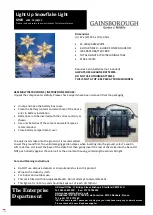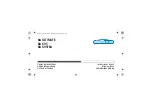
WavePro 7Zi
329
WP700Zi-OM-E-RevA
In the next figure, the top bisects the two flattest regions at the top of the waveform and, in effect, calculates the
value that would be estimated from examination of an eye-pattern persistence map.
Introduction to AORM Theory
An understanding of statistical variations in parameter values is needed for many waveform parameter
measurements. Knowledge of the average, minimum, maximum, and standard deviation of the parameter may
often be enough, but in many other instances a more detailed understanding of the distribution of a parameter’s
values is desired.
Histograms provide the ability to see how a parameter’s values are distributed over many measurements. They
divide a range of parameter values into sub-ranges called bins. A count of the number of parameter values
calculated (events) that fall within its sub-range is maintained for each bin.
While the range can be infinite, for practical purposes it need only be defined large enough to include any
realistically possible parameter value. For example, in measuring TTL high-voltage values a range of ±50 V is
unnecessarily large, whereas one of 4 V ±2.5 V is more reasonable. It is this 5 V range that is subdivided into
bins. And if the number of bins used were 50, each would have a sub-range of 5 V per 50 bins or 0.1 V/bin.
Events falling into the first bin would then be between 1.5 V and 1.6 V. The next bin would capture all events
between 1.6 V and 1.7 V. And so on.
After several thousand events, the graph of the count for each bin (its histogram) provides a good understanding
of the distribution of values. Histograms generally use the X-axis to show a bin’s sub-range value, and the Y-axis
for the count of parameter values within each bin. The leftmost bin with a non-zero count shows the lowest
parameter value measurements. The vertically highest bin shows the greatest number of events falling within its
sub-range.
The number of events in a bin, peak, or histogram is referred to as its population. The next figure shows a
histogram’s highest population bin as the one with a sub-range of 4.3 to 4.4 V, which is to be expected of a TTL
signal. The lowest value bin with events is that with a sub-range of 3.0 to 3.1 V. Because TTL high voltages need
to be greater than 2.5 V, the lowest bin is within the allowable tolerance. However, because of its proximity to this
tolerance and the degree of the bin’s separation from all other values, additional investigation may be desirable.
LeCroy DSO Process
LeCroy digital oscilloscopes generate histograms of the parameter values of input waveforms. But first, the
following must be defined:
x
The parameter to be histogrammed
x
The trace on which the histogram will be displayed
x
The maximum number of parameter measurement values to be used in creating the histogram
Summary of Contents for DDA 7 Zi series
Page 1: ...Operator s Manual WavePro SDA and DDA 7 Zi Series Oscilloscopes ...
Page 2: ... L R R H HUD RU D D ...
Page 41: ...Operator s Manual WP700Zi OM E RevA 40 The detachable WavePro Zi front panel ...
Page 376: ...WavePro 7Zi 375 WP700Zi OM E RevA Absolute Offset Relative ...
Page 439: ...Operator s Manual WP700Zi OM E RevA 438 ...
Page 440: ...WavePro 7Zi 439 WP700Zi OM E RevA ...
Page 544: ...Thank you for purchasing a WavePro SDA or DDA 7 Zi Oscilloscope ...
















































